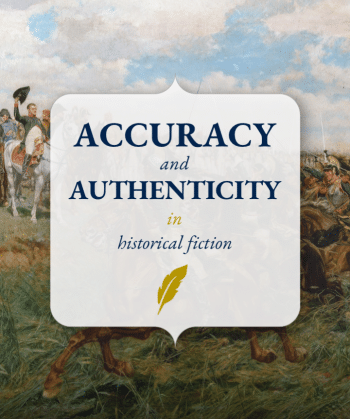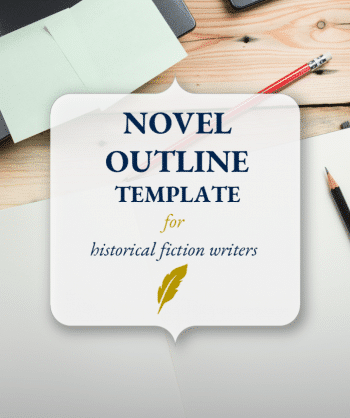We all know what historical fiction is. It’s stories that are set in the past. Easy. Next question?
Except it’s never going to be that simple. History isn’t simple, and neither is fiction, so we can hardly expect a combination of the two to be straightforward. Historical fiction offers us a perspective on the past which can both confirm and challenge our existing understandings. It can both educate and entertain – although it shouldn’t do too much of the former at the expense of the latter. And it encompasses a range of subgenres that take the central premise in all sorts of fruitful and fascinating directions. Simple? No. But that’s what makes it interesting.
What counts as historical fiction?
To make things even more complicated and even more interesting, the genre itself encompasses a rich and varied selection of subgenres.
Alternate historical fiction is a hugely popular subgenre – straddling both speculative and historical fiction. Starting with a particular historical event or figure, alternate history imagines different outcomes – what if the other side won the war? – and creates fictional worlds out of those alternate possibilities.
Historical fantasy fiction, with its elements of myth and magic, draws readers into an imagined world even more completely than ‘straight’ historical fiction. Drawing on conventions from fantasy, myth, and legend, as well as the genre of magic realism, historical fantasy treads a fine line between exploring the worlds of history and creating entirely new worlds from the imagination.
Readers of children’s and young adult novels will be familiar with the conventions of time-slip fiction, as characters slide between time and place with ease. Since H. G. Wells fired up ‘The Time Machine’ in 1895, historical fiction has taken good advantage of the conventions of time-slipping, too. The protagonist, suddenly finding themselves in another era, mirrors the experience of the reader, exploring this other time together.
And this mirroring goes a step further with dual timeline novels, juxtaposing a historical narrative against a contemporary one. The parallels between the two can offer an account of how far we’ve come – or how close we still are through doubled perspectives on the same questions.
All these subgenres are part of the wider sweep of historical fiction, although some to a greater degree than others – and each novel that explores the past, in whatever way, fits more or less depending on its particular focus. It is a secure foothold in the details of history that keeps them all under the larger umbrella, a delight in the people and places of the past, and a sense of the connections and continuities between other times and our own.
How far back do we need to go?
If we take the generally accepted definition of historical fiction as being set more than 50 years ago, the next question has to be, more than 50 years ago since when? Since now? Since the author or the reader was born? Historical fiction set far enough back in the past, well beyond living memory, is easy to define or at least to recognise. It’s when it gets a bit closer to the present that the boundaries start to blur. If someone can still remember living through the days about which we’re reading or writing, isn’t it still more present than past? More contemporary than historical?
Sarah Johnson, editor of ‘Historical Novels Review’, points out the problem that something might be considered ‘historical’ by one reader, but not by another. And she suggests here, perhaps with her tongue just a little in her cheek, that it might be possible to claim that ‘all novels are historical, but some are more historical than others.’
While rules are inevitably broken as soon as they are made, particularly where writing is concerned, a good rule of thumb here seems to be that historical fiction is set more than 50 years before the present day – or is written by someone who was not alive when the events themselves took place.
Getting it right
One of the defining features of historical fiction is a concern with accuracy and avoiding anachronism. The amount of research that historical fiction demands is huge. Sadly, most of it should never make it into the final draft, even though having done it makes that draft infinitely richer and more believable. And sometimes, frustratingly, something that is factually right just might not read right. Yes, early Quakers insisted on ‘thee’ and ‘thou’ in order to make a political point about social hierarchies, but a contemporary reader is like to tire after the first page or two of historically accurate dialogue and yearn for the occasional ‘you’.
If readers want to read a detailed account of a historical period, they’ll find a non-fiction account and they’ll read it, so it’s not the responsibility of the historical fiction author to provide that for them. Bernard Cornwell, quoted here on awriterofhistory.com, puts it clearly: ‘Your job is not to educate [..] your job is to divert and amuse.’
As in every sort of fiction, readers need to be able to immerse themselves in the lives of the characters, their actions and reactions, their trials and tribulations, their loves and losses. But these are stories that have their basis in truth, whether that truth is simply a collection of evocative period details – the right sort of hat, that sort of thing – or a complex, imaginative recreation of real lives.
The presence of real people in historical fiction further complicates the matter. Sometimes they flit in and out of the action, serving more as setting than character: ‘Look, Mama, there goes that rascal Pepys!’ Recognising someone you already know creates a sense of coming across something familiar in a new place and helps put the story into context.
When real people are placed at the centre of the action, readers come to feel they are being shown the ‘truth’ about someone they might have only learned about in textbooks or on telly. Hilary Mantel’s literary resurrection of Thomas Cromwell is a fine example of this. We come to ‘know’ Cromwell through the fiction Mantel builds up over the bare bones of the historical record. We’re inside his head throughout, as Mantel weaves together what history tells us and what she imagines. Cromwell’s head itself is historical, but the thoughts and feelings it houses are fictional.
For more detailed guidance, make sure you download The History Quill’s full guide on accuracy and authenticity in historical fiction below.
Accuracy and authenticity in historical fiction

What is it for?
Historical fiction itself has a rich history, with recognisable examples of the form cropping up from the early 19th century onwards. Walter Scott, an early exponent of the form, used historical fiction to create a mythical vision of past glories and to summon up – or invent – a nationalist ‘memory’ of past times. There’s something deeply attractive about a history that is handsome and heroic, filled with romance and daring deeds. If we care to admit it, many of us came to love historical fiction via romantic and often sentimental writers such as Scott, Georgette Heyer, and the like, with their deliciously polished visions of the past.
Now, writers like Edu Edugyan and Sara Collins are using historical fiction to write the stories of people overlooked or dehumanised by canonical versions of both history and fiction. Jerome de Groot, in ‘The Historical Novel’, reminds us that historical fiction can ‘report from places made marginal […] and present a dissident or dissenting account of the past.’ These stories challenge our easy view of the past, digging into the assumptions and attitudes on which they are based, providing a richer – if less shiny – account, in fiction, of a past that was cruel and complicated, rather than polite and polished.
Even earlier, Shakespeare understood what historical fiction could mean. Or at least, we tell ourselves he did. His plays are often read as thinly-veiled commentary on the politics of his time, disguised out of fear for his liberty or maybe even his head. There are still parts of the world where writing about the political present is a dangerous practice, so analogies through the stories of history can be a profoundly useful way to approach dangerous topics.
***
Historical fiction at its very best is a means to transport readers to a new place, a new time – or, more accurately, an old place, an old time – and with that, a reinvigorated understanding of that time and of their own. It’s a way to see and to imagine parallels and continuities between then and now, between them and us.
It’s also, when done well, hugely enjoyable. But we already knew that, didn’t we?
Pippa Brush Chappell is a regular guest contributor to The History Quill. She is a writing coach and tutor, who reads and writes historical fiction. She is particularly interested in questions of voice and in the lives of women through the ages. Her current work in progress is based on the life of a woman who travelled widely in the 17th century. Say hello on Twitter at @pippabc.
Novel outline template


